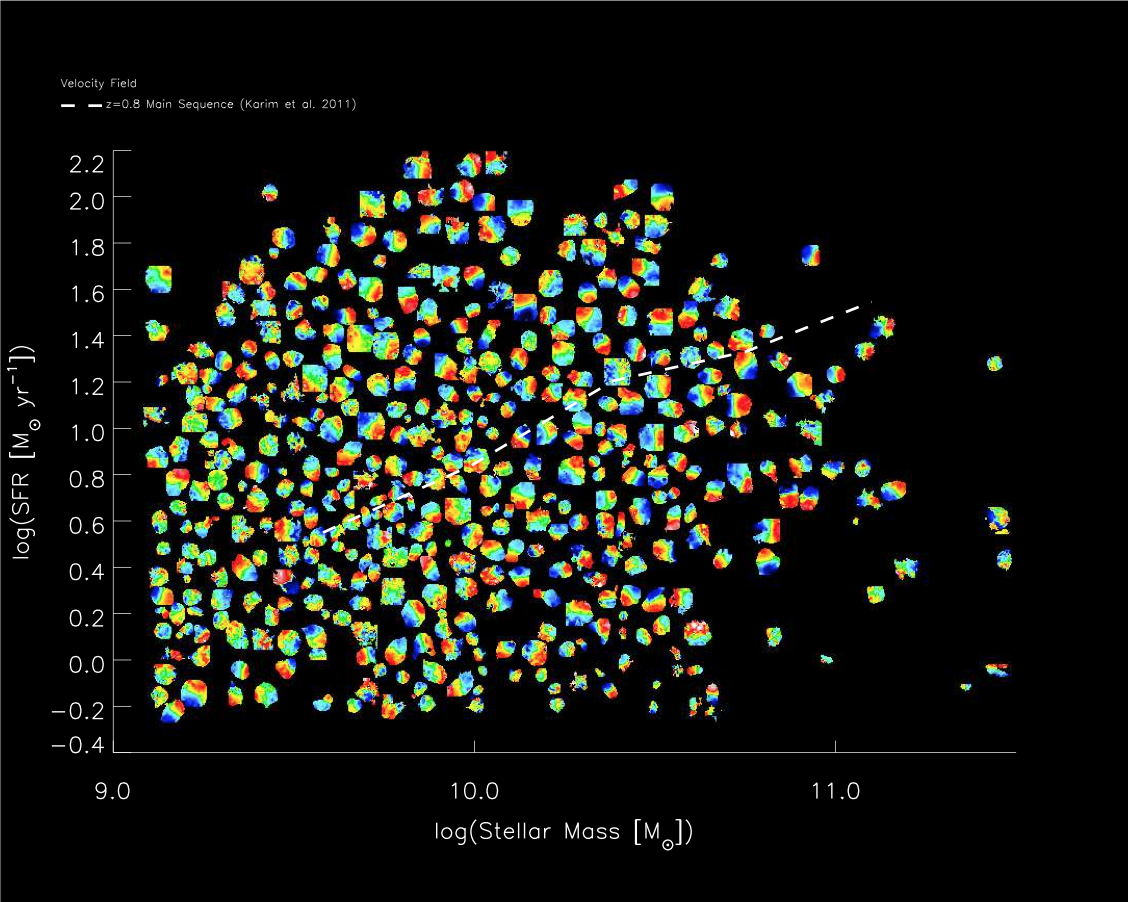The KMOS Galaxy Evolution Survey (KGES): Mass assembly across z=0–2
Within the past decade, there has been rapid progress in the study of distant galaxies. Although we are currently far from having the statistical power or data quality of local surveys such as SDSS or GAMA, observational surveys have measured the redshift evolution out to z~2 of the star-formation rate (SFR) density, stellar-mass and black hole growth, gas masses and gas fractions, gas phase metallicity and morphological/structural properties. Galaxies at z~1--2 were drastically different from those locally, with massive galaxies undergoing rapid star formation in a globally unstable disk, and the Hubble sequence not yet in place.
 |
The conventional picture for galaxy evolution is that the increase enhanced star formation rates were caused by inflows of gas from high galaxy merger rates, but recent theories have suggested that the difference is driven by smooth and continuous gas funnelling in to galaxy disks along the cosmic web. In this ``equilibrium model’’, star formation is self-regulated in the (mainly molecular) inter-stellar medium (ISM) by in-flowing material from the intergalactic medium, the rapid conversion of gas in to stars, and outflows of enriched material back to the halo. The goal of our observational project is to spatially resolve the dynamics of the ionised phase of the ISM (which traces the HII regions) and the molecular ISM, at similar spatial resolutions in high-redshift galaxies to constrain how secular processes assembled the bulk of the stellar mass in today’s massive galaxies. Our science goals are to measure
- how the angular momentum of galaxy disks evolve from z~2 to z=0;
- what controls the formation and evolution of star-forming regions (clumps);
- when and how is gas turbulence is dissipated;
- where star-forming winds originate and how much mass they carry
To address these issues, we are undertaking an observational programme that is under-pinned by our KMOS Guaranteed Time (GT) survey and exploits our VLT/KMOS, MUSE and SINFONI, Magellan/MMIRS, ALMA and NOEMA data, in particular exploiting ~30 nights of our Durham VLT/KMOS and Magellan GT programmes to measure the dynamics of ~2000 star-forming galaxies z~0.5--2.0 on ~4 kpc, and with high resolution (SINFONI) and molecular gas (NOEMA/ALMA) follow-up observations of carefully selected sub-sets of targets.
The staff working on this project are Chris Harrison, Mark Swinbank, Ray Sharples, Ian Smail and Richard Bower.
Contact Details
Centre for Extragalactic Astronomy,Ogden Centre for Fundament Physics - West,
Department of Physics,
Durham University,
South Road,
Durham DH1 3LE
Tel: 44 (0)191 3343635





